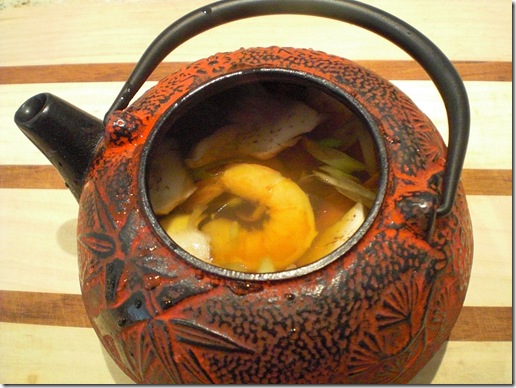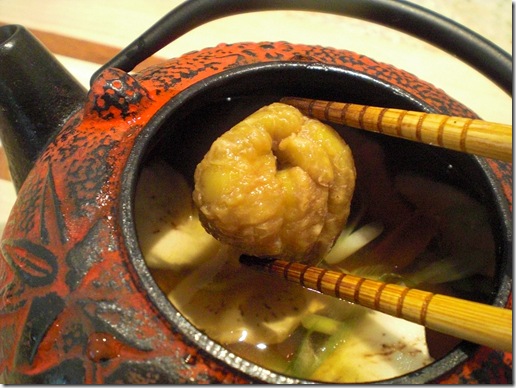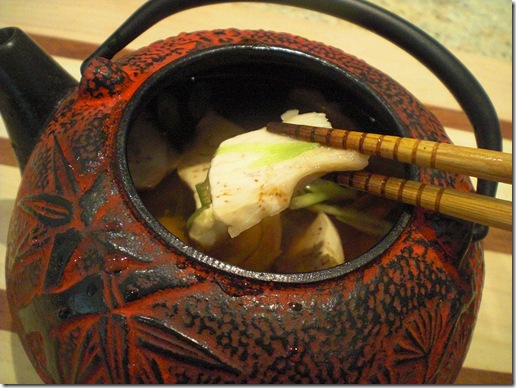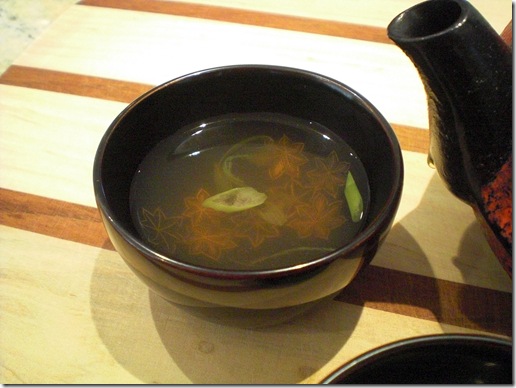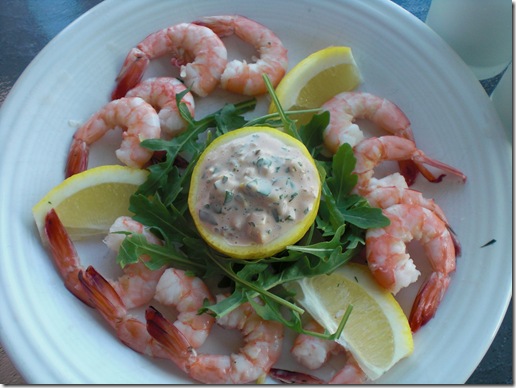As usual, we were in Hilton Head island in shrimping season. One of joys of being here is the view of the ocean from our balcony including shrimping boats that come very close to the shore and, as a result, enjoying
peel and eat fresh local white shrimp. The first night, we boiled up a pound and a half of white shrimp. With a good crusty bread and wine, it was dinner. Using the leftover shrimp and a broth made from the water used to boil the shrimp with the peeled skins added, we made a classic southern dish “Shrimp and Grits”.This could be a breakfast dish or ending dish for a snack dinner with wine.
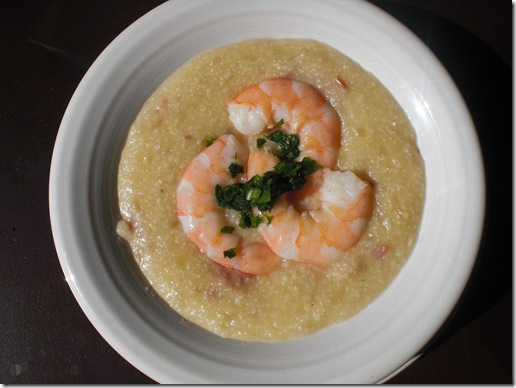
We made this in a rather simple way. Some traditional recipes suggest making
Tasso ham gravy and using chicken broth to make the grits. We made the grits using the shrimp broth, ham, onion and leftover boiled shrimp. For two servings like you see above we used;
Grits – 1/4 cup Quaker oats quick (5 minutes) grits. Real stone-ground hominy (alkali-treated corn) takes too long to cook and “instant” kind does not have the right consistency.
Shrimp broth – 1 and 1/4 cup. This was salted when we boiled shrimp. Just enough saltiness that you could drink it.
Onion 1/2 medium onion, finely chopped.
Ham – two slices of good packaged ham, cut into small bite sized pieces.
My wife first sautéed the onion in a small sauce pan with olive oil (1-2 tbs) until soft and slightly browned (about 5-7 minutes), added the ham and the shrimp broth. When the broth came to a boil, she added the grits, stirred and turned down the heat to simmer for five minutes with a lid on. Then she added a tablespoon of butter and several gratings of parmesan cheese.
We served this in a small bowl with the boiled shrimp and chopped Italian parsley as a garnish.

This dish was the essence of “shrimpiness”. The grits had a lovely light fresh shrimp taste and sweetness from the broth. The broth was what really made the dish. Although we did not make Tasso ham gravy, the onion and ham added a nice dimension. Something this good can only be made with the impeccably fresh shrimp available here. Especially with the view of ocean and shrimping boats from our balcony, this was a perfect dish.

